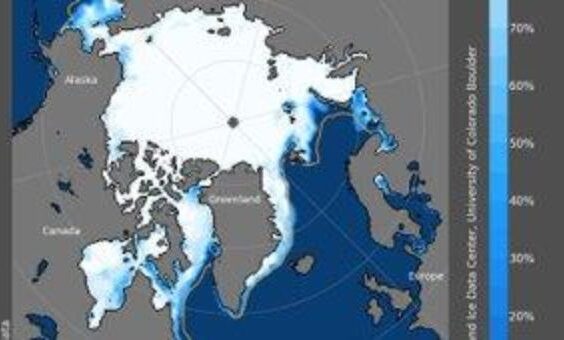NASA Launches Cutting-Edge Satellite for Polar Climate Study
Key Takeaway
NASA launched the first of two shoebox-sized satellites called PREFIRE (Polar Radiant Energy in the Far-InfraRed Experiment) to study Earth’s heat emissions at the poles. This data will improve our understanding of how Earth’s climate is changing.
Summary
- Mission Goal: The PREFIRE mission aims to measure the amount of heat Earth radiates from the poles, which are critical regions for regulating Earth’s climate.
- Launch: The first PREFIRE CubeSat was launched on May 25, 2024, aboard an Electron rocket from Rocket Lab. A second launch is planned soon.
- Mission Duration: The mission is expected to operate for 10 months after a 30-day checkout period.
- Scientific Importance: The far-infrared radiation emitted from Earth’s poles is not currently well-measured. PREFIRE will provide crucial data to improve our understanding of Earth’s energy balance and how it is affected by factors like ice melt and cloud cover.
- Benefits: Improved climate and weather models will aid researchers in predicting the impacts of climate change on Earth’s ice, seas, and weather patterns. This information will be valuable for sectors like agriculture, fishing, and coastal communities.
- Partners: This collaborative mission was developed by NASA and the University of Wisconsin-Madison.
- Tech Behind the Mission: The tiny satellites, called CubeSats, carry miniaturized thermal infrared spectrometers to measure infrared wavelengths.
NASA Launches Cutting-Edge Satellite for Polar Climate Study
Our planet’s climate is a complicated dance between incoming solar radiation and the heat Earth radiates back out into space. Understanding this energy balance is crucial for predicting the impacts of climate change. But there’s a critical gap in our knowledge: far-infrared radiation emitted from Earth’s poles, which play a giant role in regulating global temperatures, remains poorly measured.
This is where NASA’s recently launched PREFIRE (Polar Radiant Energy in the Far-InfraRed Experiment) mission comes in.
Shedding Light on the Polar Chill
PREFIRE is a game-changer. Forget clunky, massive satellites – the mission utilizes two minisatellites, affectionately called CubeSats, each about the size of a shoebox. These tiny titans pack a powerful punch, carrying miniaturized thermal infrared spectrometers to measure the far-infrared wavelengths escaping from Earth’s poles.
The first PREFIRE CubeSat hitched a ride on a Rocket Lab’s Electron rocket on May 25, 2024, with its twin set to follow soon. Following a checkout period, the mission is expected to be operational for 10 months, gathering crucial data on Earth’s energy balance at the Arctic and Antarctic.
Big Benefits from Small Packages
The significance of PREFIRE cannot be overstated. By filling this critical data gap, the mission will provide scientists with a more comprehensive picture of Earth’s energy budget. This improved understanding will significantly enhance climate and weather models, allowing for more accurate predictions of how a warming world will affect Earth’s polar ice caps, sea levels, and weather patterns.
These insights have far-reaching implications. Better climate models will equip sectors like agriculture, fishing, and coastal communities with the knowledge they need to prepare for and adapt to the inevitable consequences of climate change.
A Collaborative Effort with Monumental Potential
The PREFIRE mission is a testament to the power of collaboration. This innovative project is a joint effort between NASA and the University of Wisconsin-Madison. While NASA’s Jet Propulsion Laboratory manages the mission and provided the spectrometers, Blue Canyon Technologies built the CubeSats, and the University of Wisconsin-Madison will take the lead in processing the treasure trove of data collected during the mission.
The miniaturization of the technology behind PREFIRE represents another major leap forward in space exploration. These CubeSats demonstrate the immense potential of smaller, more cost-effective satellites to revolutionize our understanding of Earth and beyond.
The launch of the first PREFIRE CubeSat marks a new chapter in Earth science. With these tiny titans gazing down at our planet’s poles, we can anticipate giant strides in unraveling the mysteries of Earth’s climate and charting a course for a sustainable future.
For more details, read the source: NASA’s PREFIRE Mission.





